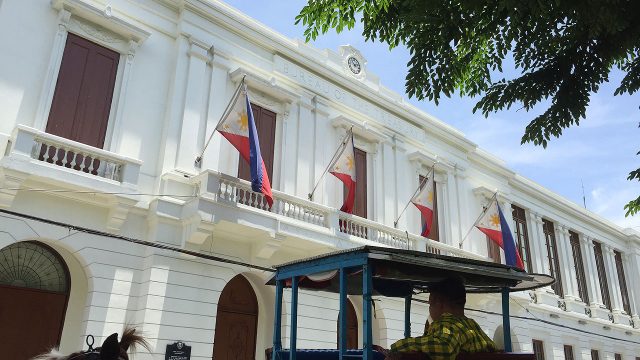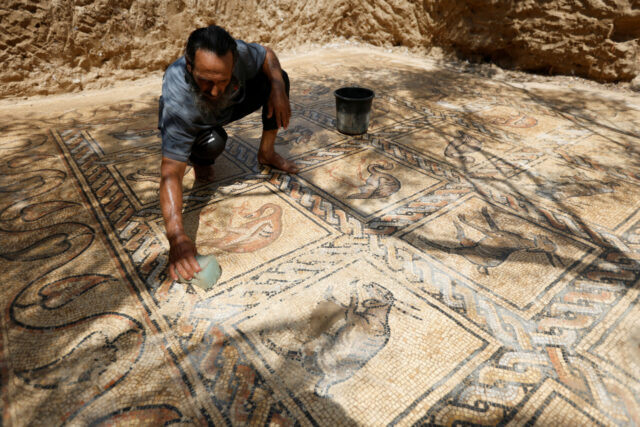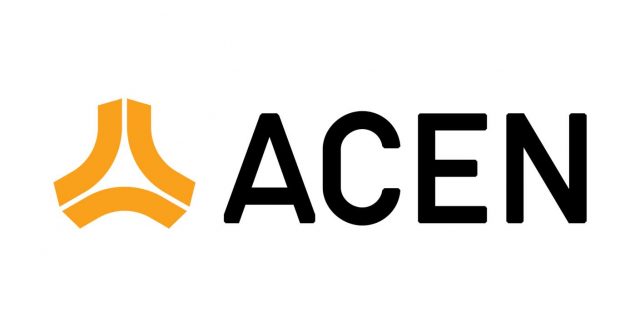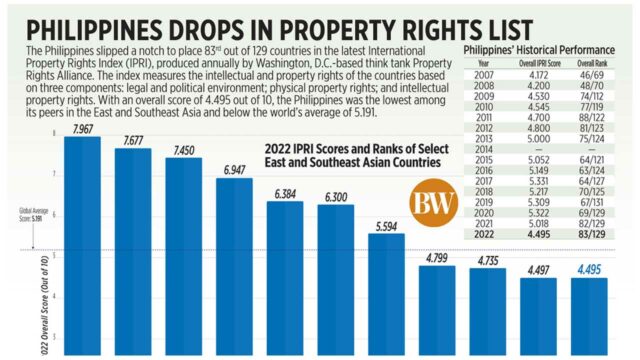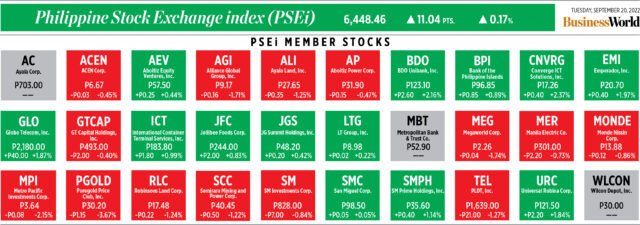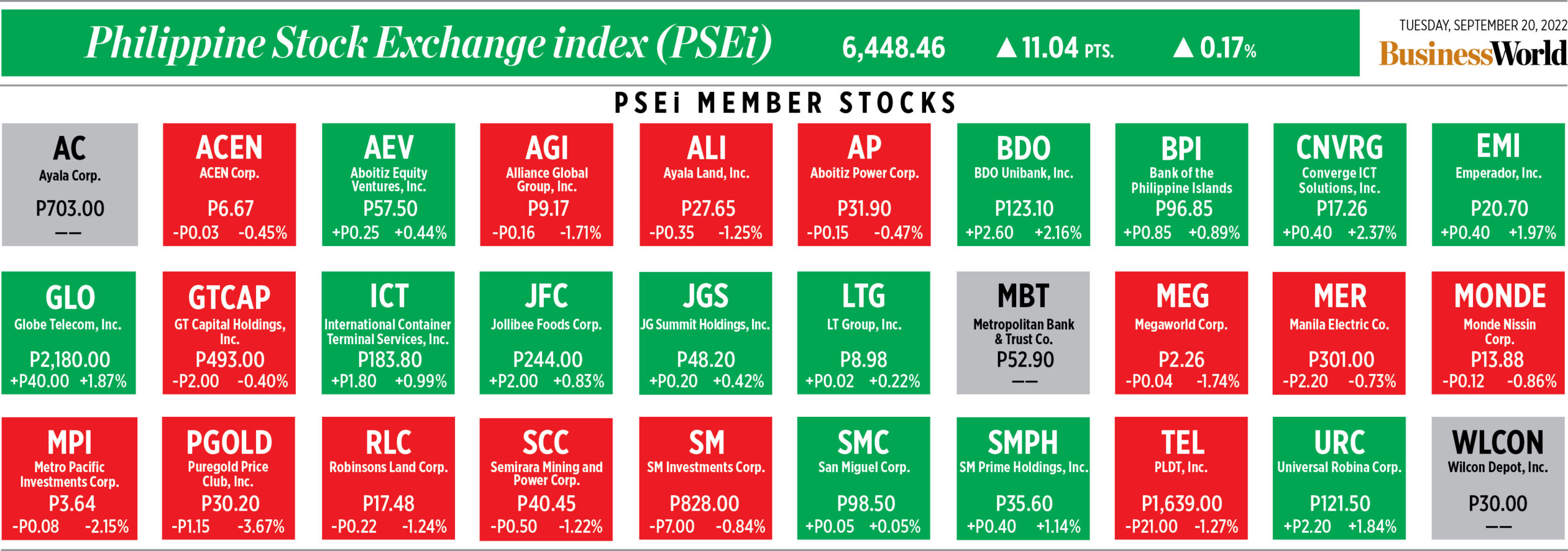Film screenings at the CCP Arthouse Cinema
THE CULTURAL Center of the Philippines (CCP) Arthouse Cinema presents ON VERS(E/U)S AND DRONES, a two-day special screening of the films Ang Hupa by Lav Diaz on Sept. 21, 2 p.m., and Respeto by Treb Monteras II on Sept. 22, 2 p.m. at the CCP’s Tanghalang Manuel Conde. A talkback session will follow the screenings. Admission is free. Guests must their face mask at all times, and bring vaccination cards/certificates (e-copies are allowed). For more information on the CCP’s new normal safety protocols, visit https://bit.ly/staysafeatCCP.
Shangri-La Plaza screening 7 films for free
SEVEN films from Mexico, Colombia, Chile, and Singapore are screening for free on Sept. 21-25 at Shangri-La Plaza mall. For the first time, the mall is hosting the Pacific Alliance Movie Nights, in partnership with the Embassies of Chile, Colombia, Mexico, and Singapore, and the Film Development Council of the Philippines, at the Red Carpet at the Shang. To be shown are: Mexico’s Arráncame la vida (Tear this Heart Out), about a young woman who married an old prominent politician who turned out to be ruthless and unfaithful, and Cuando los hijos regresan (The Kids are Back), a comedy about a happily retired couple who must deal with their adult children moving back home; Colombia’s El Piedra (The Stone), about an unsuccessful boxer who gets paid to lose fights and finds himself taking care of a boy who claims to be his son, and the documentary Chiribiquete which follows Colombian archaeologist and anthropologist Carlos Castaño; Chile’s Calzones Rotos (Family Secrets), a dark comedy about a family that’s about to uncover their dying matriarch’s old secrets after she confesses to killing her husband, and Mis hermanos sueñan despiertos (My Brothers Dream Awake) about teenage brothers in a juvenile center who join a risky escape; and Singapore’s Motel Acacia about a half-Filipino who is mentored by his tyrannical father to take over their family business, a creepy motel that takes in illegal immigrants. All films will be screened in their original language with English subtitles. Entrance is free on a first come, first served basis. For updates and inquiries, follow Shangri-La Plaza on Facebook at www.facebook.com/shangrilaplazaofficial and on Instagram @shangrilaplazaofficial.
2 shows opening at Silverlens
SILVERLENS will open two shows on Sept. 22, both of which will run until Oct. 22. The first is “come – one – come – all,” a solo exhibition by senior Thai contemporary artist Mit Jai Inn. As a notable expansion of his artistic practice, “come – one – come – all” aims to present the allure behind three different facets of his 40-year art practice, all of which possess a taste and twist of Modernism. In this show, the artist himself acts as the master of his own language, weaving his very own grammatical principles for paintings. The second show is “Haiku in Clay,” Shozo Michikawa’s second solo show with Silverlens. In it he continues to take inspiration from his birthplace, Hokkaido, with its geography of topographical contrasts from mountain greens to volcanic plateaus in a new collection of fifteen works. The ceramicist’s signature style of twisting clay from the inside without disturbing the exterior as the wheel turns gives the works a uniquely sculptural form where movement becomes an abstraction. Silverlens’ Manila gallery is at 2263 Don Chino Roces Ave. Ext., Makati. It is open Tuesday – Saturday, 10 a.m. to 5 p.m.
Light and Sound show marks CCP anniversary
TO celebrate the 53rd anniversary of the Cultural Center of the Philippines (CCP) this month, the SINAG 2022: Light and Sound show and spectacle will light up the CCP façade from September 22-25. Multi-awarded lighting designer John Batalla conceptualized the outdoor light show, with sound design by Jethro Joaquin. “We will interpret the three transcendentals of Truth, Goodness, and Beauty paired with a soundscape of indigenous Filipino instruments, snippets of folk music and quintessential Filipino sound bites or quotable quotes from the past,” Mr. Batalla said. SINAG 2022 is produced by the CCP Production Design and Technical Services Division. The show, which runs for 10 minutes, will open at 7 p.m. on Sept. 22 and run from Sept. 23 to 25 at 7, 7:30, 8, 8:30, 9, and 9:30 p.m. SINAG is an annual anniversary light and sound spectacle of the CCP enjoyed by pedestrians, motorists, and regular visitors to the Complex.
ARTablado presents ‘Habi ni Ake’
ARTIST Racquel “Ake” Pagulayan — an entrepreneur and mother of three — makes art with materials that are anything but traditional. Using everyday household items, she is able to explore her creativity in paintings, sculptures, accessories, cross-stitching, beaded necklaces, and even artificial copper bonsai trees. She didn’t have the financial means to pursue the arts, much less a career in it at first. As the breadwinner of her family, she worked in the garments industry. It was when she saw a mandala made of sewing threads that she was inspired to create her own. Her works are now on view in the exhibit “Habi ni Ake” at ARTablado until Sept. 30. The gallery is at the Upper Ground Floor, North Wing, of Robinsons Antipolo.
The CCP Dance Series kicks off
AS PART of the CCP Dance Series (LIVE!) 2022 which is ongoing from September to December and features productions created by National Artists for Dance Alice Reyes and Agnes Locsin, French choreographer Redha Benteifour, and choreographic works by young Filipino dancers, the Cultural Center of the Philippines (CCP) presents Pulso Pilipinas I, at the CCP Tanghalang Nicanor Abelardo on Sept. 23 at 8 p.m. and on Sept. 24 at 3 p.m. Pulso Pilipinas I presents dancers from regional dance groups, both students and professionals, performing the dances “Company” by National Artist for Dance Alice Reyes, “Moriones” by National Artist for Dance, Agnes Locsin, “We Men” by Lester Reguindin, “Asong Ulol” by Denisa Reyes, and “Mamang Kutsero” from Edna Vida’s Ensalada. For ticket information contact the CCP Box Office at 8832-3704, the CCP Production Management Services Division at 8832-2314, the CCP Arts Education Department at 8832-1125 loc. 1605, or visit www.culturalcenter.gov.ph for more information and ticket inquiries.
‘Perpetual Flux’ at Robinsons Galleria
WHEN the pandemic hit, a group of fine arts graduates from the College of Holy Spirit, whose art had been dormant since they were busy being professionals in different fields or were raising a family, found they needed something to cope with the bleakness of the situation, and they decided to take up painting again. They formed an art group in the first half of 2020 called ARTfinity which has two ongoing exhibitions. One is billed as “Perpetual Flux,” which is on view until Sept. 30 at ARTablado, Level 3 of Robinsons Galleria. It features 66 works by the 13 members of ARTfinity. The other exhibit, called “ARTfinity: Unfiltered,” is on view until the end of October at Café Summit Ridge in Tagaytay. ARTfinity’s members are Valerie Teng, Aina Marcaida, Andrei Solmirano, Jonathan Astrid Anabo, Gabriel Xavier Valenzuela, Jayvee Del Rosario, Kwin Chi, Mark Anthony Janoya, Marie Ann Paredes, Mr. Fu, Phil Salazar, Scifi Wasabi, and Zarah Eugenie Cabangon.
Security Bank donating art to National Museum
TO help promote and celebrate the country’s cultural and artistic heritage, Security Bank is donating 14 sculptures by the late National Artist Guillermo Tolentino to the National Museum of Fine Arts. The art works will be officially turned over to the museum on Sept. 24 at the National Museum of Fine Arts, P. Burgos Drive, Rizal Park, Manila.
Gateway exhibit focuses on nature
GATEWAY Gallery, the art museum of Araneta City, is currently hosting the art of Punjabi Artist Jaspreet Kaur in an exhibition called “Extinction,” which opened on Sept. 10. The exhibition features life-like paintings of different endangered species including birds of prey and big cats such as lions and tigers. Ms. Kaur is known both in the Philippines and in India. Her art, mainly done through various media such as oil, pastel, acrylic, and charcoal, has been exhibited in various locations in the Philippines and in Punjab. “Extinction” is on view until Sept. 24 at the Small Room of the Gateway Gallery, Gateway mall, Araneta City in Cubao, Quezon City.
FHL presents virtual papermaking workshop
THE AYALA Foundation, Inc., Filipinas Heritage Library (FHL), the Japan Foundation Manila, and Jimenez Logistics Solutions, Inc. present LIKHANG PAPEL:
A Virtual Papermaking Workshop with Asao Shimura on Oct. 8 and 15 (Saturdays) from 10 a.m. to noon. The workshop will be online via Zoom. The workshop shows the use of Philippine plant fibers in Japanese papermaking. Filipinas Heritage Library and the Japan Foundation, Manila present the workshop as part of the Printed Word, a series on the history of the book, that has been ongoing since 2014. Crafts enthusiasts and fine arts teachers are welcome to attend. The workshop rates (inclusive of a customized papermaking kit and shipping for local participants; overseas participants shoulder extra fees for international shipping) is P3,700, with Seniors and PWDs having a discounted fee of P3,150. The workshop is recommended for those 16 years old and above. A pre-read will be provided after completing one’s workshop registration. For inquiries send an e-mail to asklibrarian@filipinaslibrary.org.ph.
Three tenors star in concert series
MUSICAL theater artists Markki Stroem, Arman Ferrer, and Poppert Bernadas are headliners in this year’s Triple Threats: Three Tenors concert series from October to December at the Cultural Center of the Philippines’ Tanghalang Ignacio Gimenez (CCP Black Box Theater). Triple Threats is a series of solo concerts featuring stalwarts of Philippine Musical Theater. Leading this series on Oct. 14 is Markki Stroem, who has starred in, among others, Next To Normal (Atlantis, 2011), Camp Rock (Repertory, 2012), Kung Paano Ako Naging Leading Lady (Dalanghita Production, 2015), Hair (Repertory, 2017), and Side Show (Atlantis, 2018). The series continues on Nov. 18 with operatic tenor Arman Ferrer who has come out in Walang Sugat, Mabining Mandirigma, Maynila: Sa Mga Kuko ng Liwanag, Binondo: A Tsinoy Musical, and Lapu Lapu, among others. Closing the series on Dec. 21 will be Poppert Bernadas, an original member of the vocal group the Ryan Cayabyab Singers who has starred in Rak of Aegis, LORENZO the Musical, Spoliarium, and Marawi The Musicale among others. The three concerts will begin at 7:30 p.m. at Tanghalang Ignacio Gimenez. Check out the CCP’s official website https://culturalcenter.gov.ph and Facebook page https://www.facebook.com/culturalcenterofthephilippines for more information.


